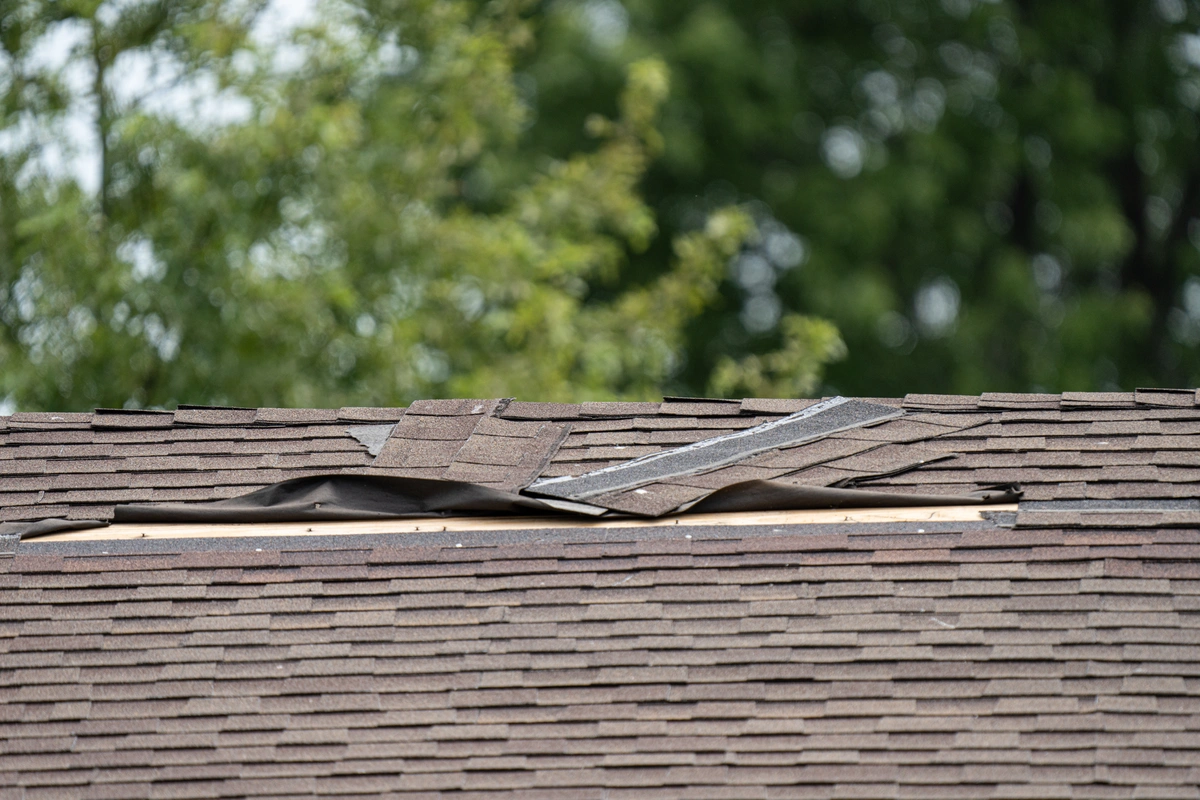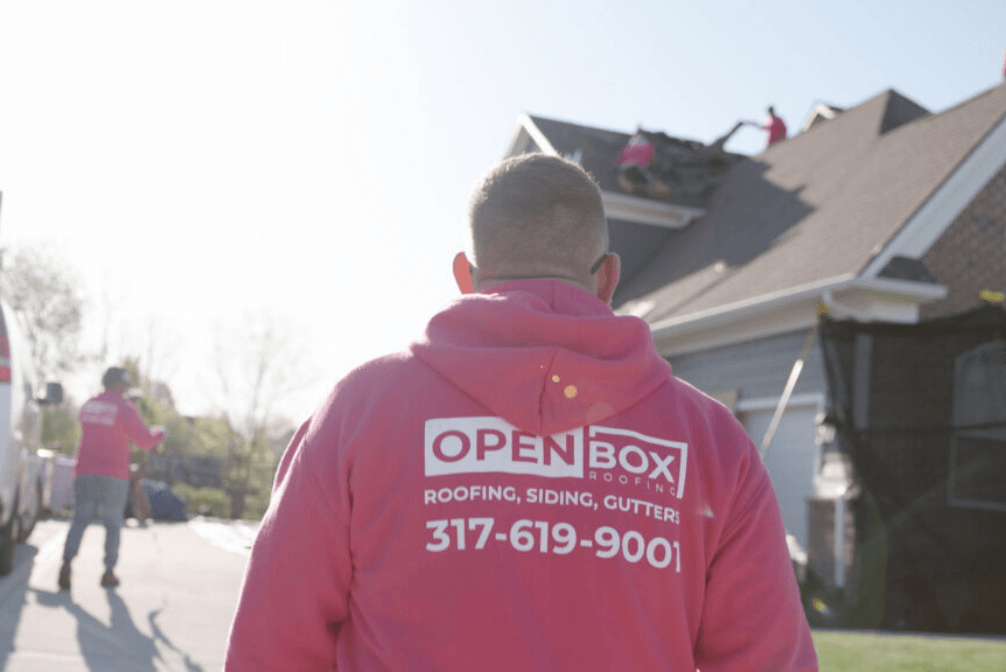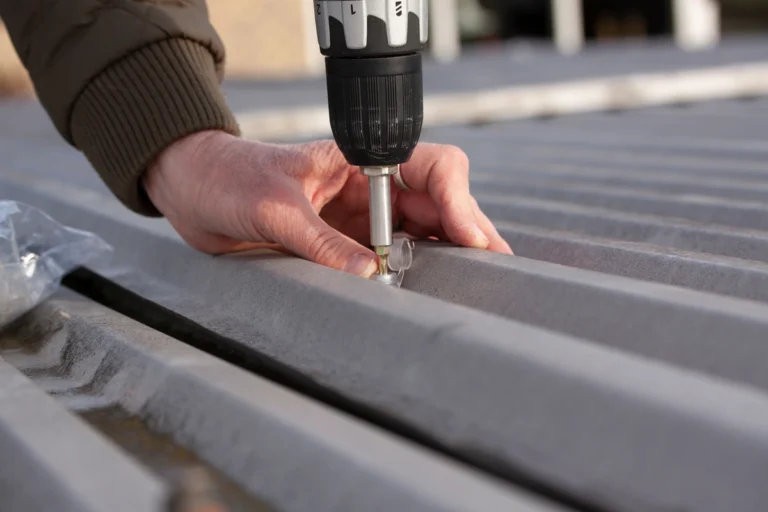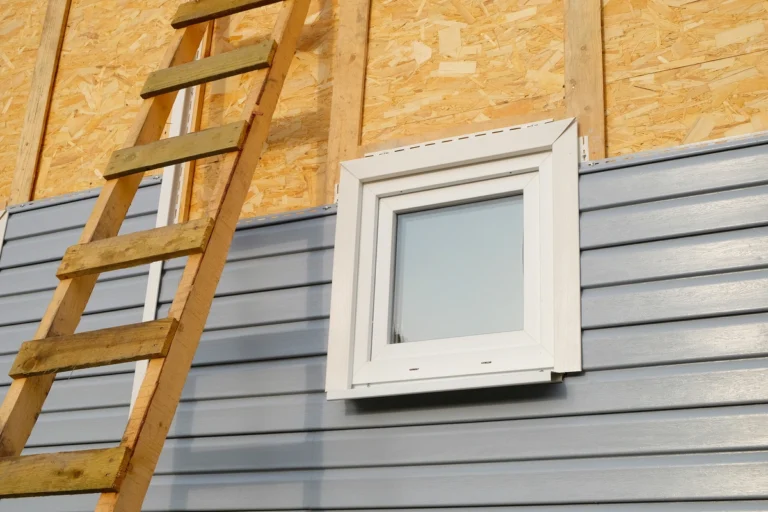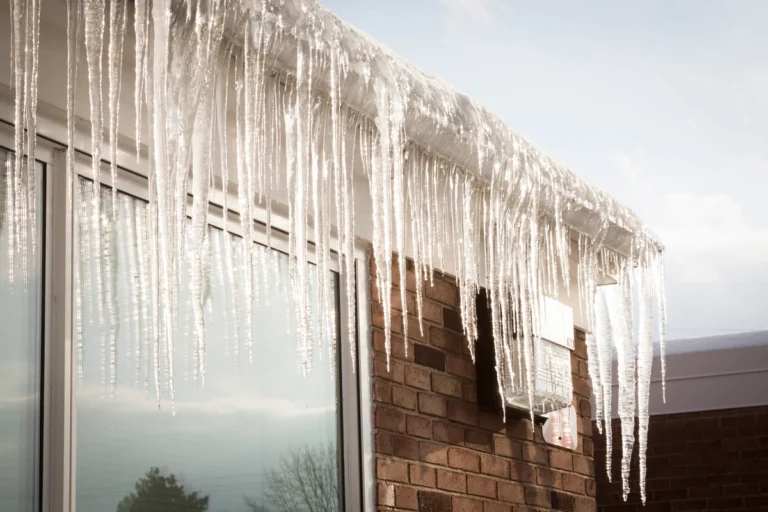Your home’s roof is your home’s #1 defender, and it takes the brunt of Mother Nature’s fury. Among the various weather-related threats, high winds can cause significant damage to your roof.
Understanding the potential risks, signs of damage, and how to address wind damage is crucial for maintaining the integrity of your home. We’re here to help, by explaining the various aspects of wind damage to your roof, including:
Wind speeds that can cause damage
- Signs of wind damage
- How to repair it
- Insurance coverage
- Finding a reputable roofing contractor
Wind Speeds That Can Damage Your Roof
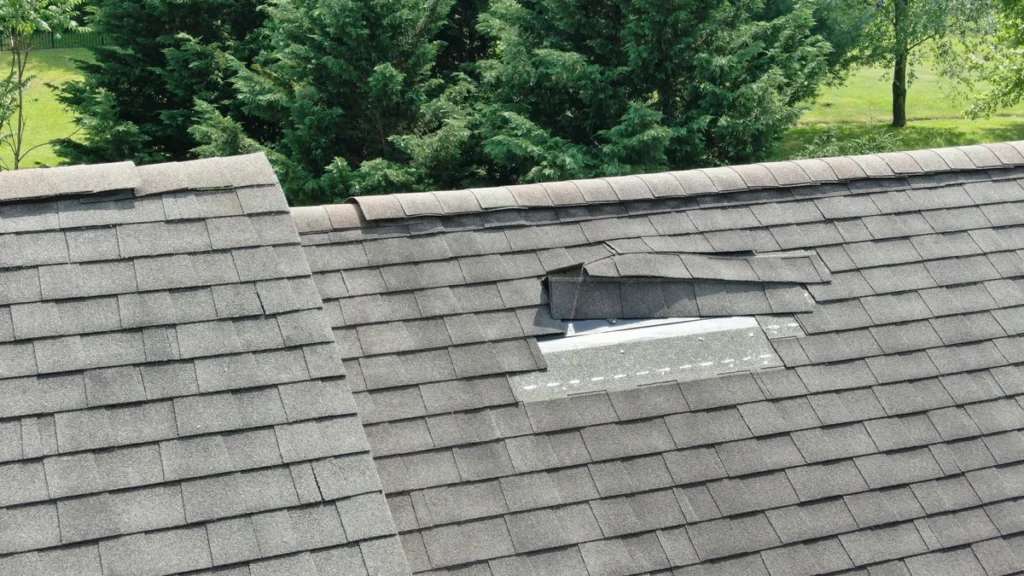
One of the first things to consider when discussing wind damage to your roof is the speed of the wind. Different roofs are designed to withstand different wind speeds, and exceeding these limits can lead to damage. Here are some general guidelines:
- Light Winds (0-30 mph): Roofs are typically designed to withstand light winds without much trouble. However, even in these conditions, it’s important to ensure that your roof’s shingles, flashing, and fasteners are in good condition.
- Moderate Winds (30-50 mph): Moderate winds can start to lift shingles and expose the underlying roofing materials. Ensure your roof is well-maintained to prevent damage during these conditions.
- High Winds (50-70 mph): High winds pose a significant risk to your roof. Shingles may become loose or fly off, leading to potential water infiltration. Regular roof inspections become crucial in high-wind areas.
- Severe Winds (70+ mph): Severe winds can cause extensive damage to your roof. Entire sections of shingles can be ripped away, and structural damage may occur. Homes in hurricane-prone areas should have reinforced roofs.
Signs of Wind Damage to Your Roof
Detecting wind damage early is key to preventing further issues. Here are some common signs to look for:
- Missing or Lifted Shingles: After a windstorm, inspect your roof for any missing or lifted shingles. These can allow water to infiltrate and cause interior damage.
- Damaged Flashing: Check for damaged or loose flashing around roof penetrations like vents, chimneys, and skylights. Damaged flashing can lead to leaks.
- Curling or Cracked Shingles: Wind can cause shingles to curl or crack, making them less effective at protecting your roof.
- Water Stains on Ceilings: If you notice water stains on your ceilings or walls, it may be a sign of a roof leak caused by wind damage.
- Debris Accumulation: After a storm, look for debris on your roof, such as branches or leaves. Accumulated debris can cause water to pool and lead to damage over time.
How to Repair Wind Damage in 4 Steps
Addressing wind damage promptly is essential to prevent further deterioration. Depending on the extent of the damage, you may need to take different steps:
1) Temporary Repairs:
If you notice minor damage, such as a few missing shingles, you can perform temporary repairs using roofing cement or sealant. This will prevent immediate leaks.
2) Partial Roof Replacement:
If the damage is more extensive but confined to a specific area, consider a partial roof replacement. This involves replacing damaged shingles and underlayment.
3) Full Roof Replacement:
In severe cases, a full roof replacement may be necessary. This is common if a significant portion of the roof is damaged or if the roof is nearing the end of its lifespan.
4) Professional Inspection:
Always have a professional roofing contractor inspect your roof after a windstorm. They can assess the extent of the damage and recommend the appropriate repairs.
Insurance Coverage for Wind Damage
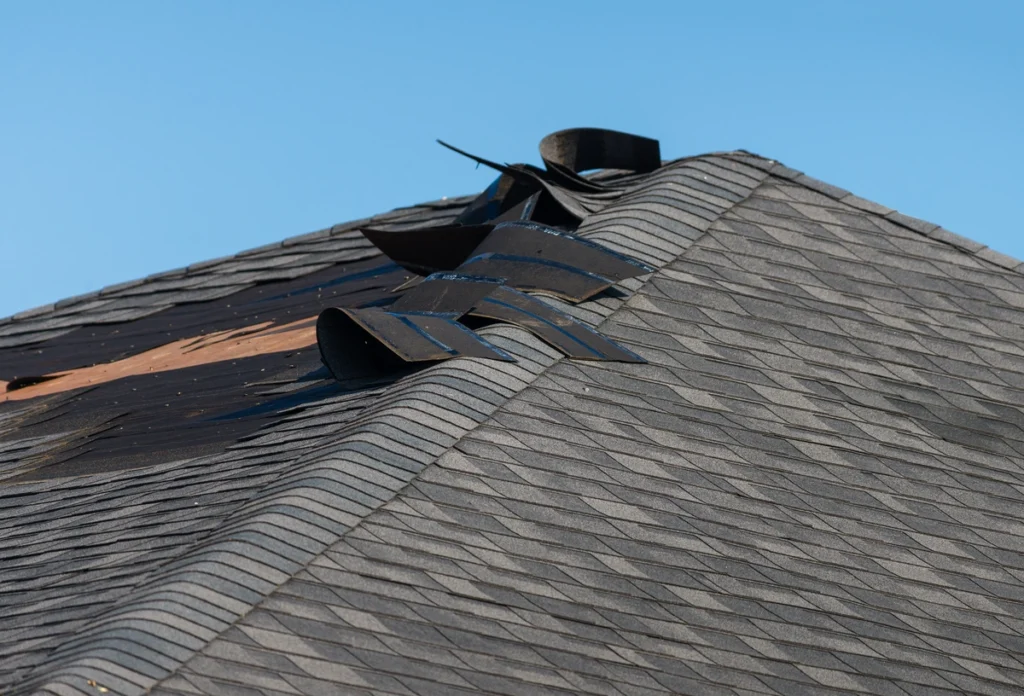
Whether or not your homeowner’s insurance covers wind damage depends on your policy and the specific circumstances. Here are some key points to consider:
- Policy Coverage: Review your homeowner’s insurance policy to understand what types of wind damage are covered. Most policies cover damage caused by windstorms, tornadoes, and hurricanes.
- Deductibles: Be aware of your policy’s deductible for wind-related claims. You’ll need to pay this amount out of pocket before your insurance kicks in.
- Document the Damage: After a windstorm, document the damage with photographs and detailed notes. This will be crucial when filing a claim.
- File a Claim: Contact your insurance company as soon as possible to initiate the claims process. Provide them with all the necessary documentation.
- Roof Inspection: Your insurance company may send an adjuster to inspect the damage. Be present during this inspection and provide any additional information needed.
Tips for Finding a Reputable Roofing Contractor
When it comes to repairing wind damage to your roof, finding a trustworthy roofing contractor is essential. Follow these steps to ensure you make the right choice:
- Research: Start by researching local roofing contractors. Check online reviews, ask for recommendations from friends or neighbors, and verify their credentials and licenses.
- Get Multiple Quotes: Contact several contractors to get quotes for the repair or replacement. This will help you compare prices and services.
- Ask for References: Request references from the contractors and follow up with past clients to gauge their satisfaction with the work.
- Check Insurance and Licenses: Ensure that the contractor is properly insured and licensed. This protects both you and the contractor in case of accidents or issues during the project.
- Written Contract: Always have a detailed written contract that outlines the scope of work, materials to be used, project timeline, and payment schedule.
- Warranty: Inquire about the warranty offered on the workmanship and materials. A reputable contractor should provide a warranty for their services.
Get Help With Your Insurance Claim
Wind damage to your roof is a common issue that homeowners may face, especially in regions prone to strong winds and storms. By understanding the potential risks, recognizing the signs of damage, knowing how to repair it, and being aware of insurance coverage, you can effectively protect your home from further harm. Remember that finding a reputable roofing contractor is crucial in ensuring your roof is restored to its optimal condition, providing you with peace of mind for years to come.
If you’re looking for a contractor who is ready to help you deal with whatever roof damage comes your way, then Open Box is the clear choice! Contact us today to get help with your wind damage!
